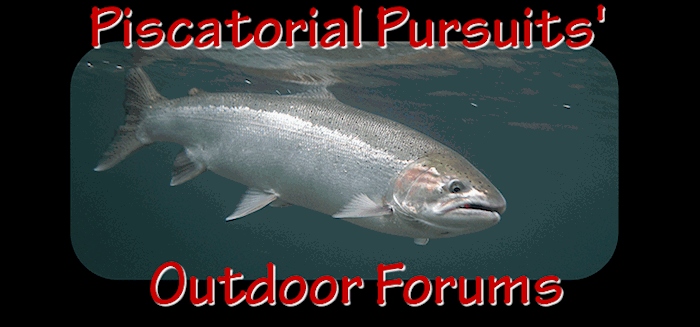Parker -
Like Salmo G I have not noticed that the caudal peduncle being longer or shorter on summer steelhead. Could well be that is the case but here in the North Sound rivers I have not noticed it. It might be that late summer fish tend to have loss condition thus the peduncle may look longer on the skinny fish, especially when compared to a fresh winter.
Summers and winters as well as resident rainbows are just different life histories of the same species and can breed with each other. With that it could be that there are some intermediate fish - sometimes folk call them swinters or tweeners.
Like your photos indicate it is hard to judge a summer/winter fish just by a photo. Have seen ocean fresh wild winter steelhead in November/December that are months from spawning (April/May) that look virtually the same as chrome hatchery summer in April/May. The reason of course is that both are in primo condition, chrome bright, and months from spawning.
To accurately separate a summer from a winter visually requires some judgement on the condition of the fish and consideration of the time of the year. In the spring/early summer the summer fish would be a well conditioned fish, lots of internal fat, and sexually immature. A winter's condition at the same time would depend on whether it had spawned or not. Spawn out winter females often are confused with early summers. Both fish can be chrome bright (with a week or two they can return to near ocean bright condition), slender fish, with very small undeveloped eggs (thumb size). However if the fish were cleaned it would be apparent that the winter had used most of its fat reserves while the summer would have large fat deposits. The male winters would be obivous maturing or mature fish or if they are spawnouts they would be obivously thinner and often beat up (if they remain in the river for an extended after spawning they may become bright once again).
In the fall/winter period one of the most reliable clues at least in the North Puget Sound area is that the summer fish usually have a number of parasitic copepods (typically in the mouth on its roof, gills, or occassionally at the base of the pectoral fins) while the winter fish don't. For the males man of the hatchery summer fish have a lime greenish back with a big red stripe (many of the wild summer fish are colored more trout like wiht a more bluish back). The hatchery males will typcially when dark will be grayish/black with a less pronounce red stripe. In late November and December the dark fish in our rivers is often winter fish as they spawn as much as a month earlier than a summer that has been in the river for 6 or more months.
The size of the fish may not be a very good clue depending on the area the fish are from. Again in the North Puget region the smallest fish on the average are our native summer, the next the hatchery winters, then the hatchery summers and finally our wild winters. Of course in each group there is a wide range in sizes; for example have seen wild Skagit/Sauk winters vary from as little as 4# to more than 30#.
To your quiz - A fun topic and chance for all us "experts" to make fools of ourselves - thanks.
As stated above to reliably separate summers from winters more than a photo is sometimes needed. That said I would say #1 and #5 are summers, #2 and #4 are winters. #3 is an interesting looking fish in that is unusually fat for an ocean run O mykiss but if force to pick one or the other I would have to go with a winter (on the average winters tend to be slightly heavier at a given length).
Tight lines
Smalma















 Previous Topic
Previous Topic Index
Index



